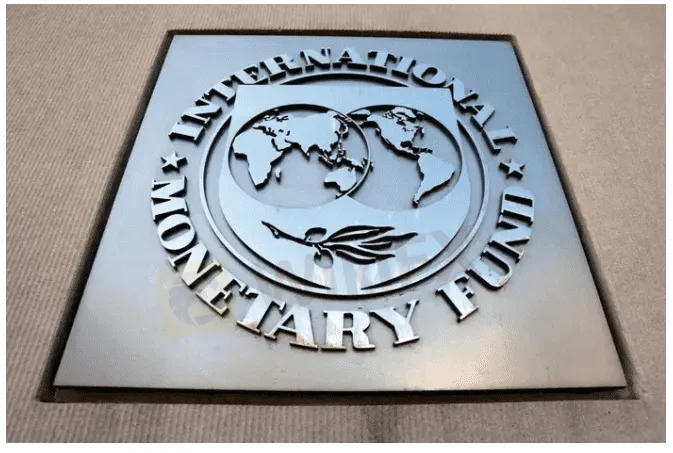简体中文
繁體中文
English
Pусский
日本語
ภาษาไทย
Tiếng Việt
Bahasa Indonesia
Español
हिन्दी
Filippiiniläinen
Français
Deutsch
Português
Türkçe
한국어
العربية
IMF warns of ‘stagflationary’ risks in Asia, cuts growth outlook
Abstract:The Asian region faces a “stagflationary” outlook amid significant uncertainty with economic growth being lower than previously expected and inflation being higher, a senior International Monetary Fund (IMF) official said on Tuesday.

The Asian region faces a “stagflationary” outlook, a senior International Monetary Fund (IMF) official warned on Tuesday, citing the Ukraine war, spike in commodity costs and a slowdown in China as creating significant uncertainty.
While Asia‘s trade and financial exposures to Russia and Ukraine are limited, the region’s economies will be affected by the crisis through higher commodity prices and slower growth in European trading partners, said Anne-Marie Gulde-Wolf, acting director of the IMFs Asia and Pacific Department.
Moreover, she noted that inflation in Asia is also starting to pick up at a time when Chinas economic slowdown is adding to pressure on regional growth.
“Therefore, the region faces a stagflationary outlook, with growth being lower than previously expected, and inflation being higher,” she told an online news conference in Washington.
The headwinds to growth come at a time when policy space to respond is limited, Gulde-Wolf said, adding that Asian policymakers will face a difficult trade-off of responding to slowing growth and rising inflation.
“Monetary tightening will be needed in most countries, with the speed of tightening depending on domestic inflation developments and external pressures,” she said.
The U.S. Federal Reserve‘s expected steady interest rate hikes also present a challenge to Asian policymakers given the region’s huge dollar-denominated debt, Gulde-Wolf said.
In its latest forecast issued this month, the IMF said it expects Asias economy to expand 4.9% this year, down 0.5 percentage points from its previous projection made in January.
Inflation in Asia is now expected to hit 3.4% in 2022, 1 percentage point higher than forecast in January, it said.
A further escalation in the war in Ukraine, new COVID-19 waves, a faster-than-expected Fed rate hike trajectory and prolonged or more widespread lockdowns in China are among risks to Asias growth outlook, Gulde-Wolf said.
“There is significant uncertainty around our baseline forecasts, with risks tilted to the downside.” she said.

Disclaimer:
The views in this article only represent the author's personal views, and do not constitute investment advice on this platform. This platform does not guarantee the accuracy, completeness and timeliness of the information in the article, and will not be liable for any loss caused by the use of or reliance on the information in the article.
Read more

CySEC Revokes UFX Broker Licence as Reliantco Halts Global Operations
The Cyprus Securities and Exchange Commission (CySEC) has officially withdrawn the Cyprus Investment Firm (CIF) licence of Reliantco Investment Limited, the operator of UFX.com. This decision followed a six-month period during which the company failed to provide any investment services or perform investment activities.

Elon Musk Sparks Debate Over Presidential Power and Federal Reserve Independence
Elon Musk has voiced his support for the controversial idea that United States presidents should have a role in shaping Federal Reserve policies. This endorsement aligns with recent remarks from President-elect Donald Trump, who has hinted at revisiting the central bank's independence, a long-held tradition in the nation's financial governance.

Consob Sounds Alarm: WhatsApp & Telegram Users Vulnerable to Investment Scams
Italy's financial regulator, Consob, has raised alarms over an increase in fraudulent schemes targeting investors through mobile messaging platforms such as WhatsApp and Telegram.

Crypto 101: Coins vs Tokens
For those new to the world of cryptocurrency, terms like "coin" and "token" may seem interchangeable. However, understanding the distinction between these two digital assets is crucial for navigating the crypto landscape. Both coins and tokens serve as integral components of blockchain ecosystems, yet they differ in their functionalities, use cases, and the technologies underpinning them.
WikiFX Broker
Latest News
BSP Shuts Down Uno Forex Over Serious AML Violations
ACY Securities Expands Global Footprint with South Africa Acquisition
Tokyo Police Arrest 4 for Unregistered FX Trading Scheme
Rupee gains against Euro
WikiEXPO Global Expert Interview: The Future of Financial Regulation and Compliance
DFSA Warns of Fake Loan Approval Scam Using Its Logo
Consob Sounds Alarm: WhatsApp & Telegram Users Vulnerable to Investment Scams
CySEC Revokes UFX Broker Licence as Reliantco Halts Global Operations
Axi Bids AUD 52M to Acquire Low-Cost Broker SelfWealth, Outbidding Competitor Bell Financial
Crypto Influencer's Body Found Months After Kidnapping
Currency Calculator


